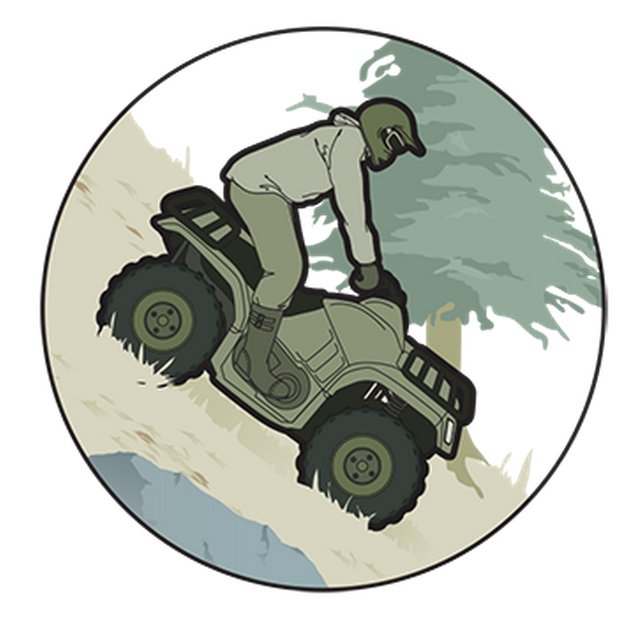We may earn revenue from the products available on this page and participate in affiliate programs. Learn More ›

Illustrations by flying-chilli.com
The modern four-wheel ATV is a great tool for hunters who want to get far from the pavement. But, like most tools for hunting, it takes skill to operate a quad safely. For most hunters, a good dose of common sense goes a long way, but even experienced riders can find themselves in precarious situations. If you go too fast over rough terrain or ask the machine to do something it wasn’t designed to do, you’re asking for trouble. Believe me, it will find you. Learn these five ATV driving skills and you’ll always be in control of your rig.

1) Loading Up
Put oversize cargo—such as a field-dressed deer—on your rear rack, as close to the vehicle’s center as possible. Setting a heavy load outside the frame can seriously compromise your ATV’s maneuverability.
Once the load is centered, strap it firmly in place; rough ground can cause cargo to shift and impair handling. Use adjustable cargo straps rather than rope. Pick the least aggressive trail for the return trip, and take your time getting back to base camp.
If your trophy is heavy enough to lift your quad’s front end, forget about carrying it. Your only option is to drag it back to camp behind the machine.
2) Working Your Brakes
As soon as you get on the vehicle, test the brakes to get a feel for their responsiveness. Always apply pressure from both the front and rear as evenly as possible. Doing so helps ensure that you can bring the ATV to a controlled stop.
If you cross through water deep enough to get the brakes wet, proceed with caution. The pads’ performance will degrade until they dry. To speed this process, ride your brakes lightly to heat
them up.
Fine gravel, mud, and the like can be very hard on brake components. Rinse your ATV after long rides to guard against mechanical failures.
3) Climbing a Steep Hill
Newer quads are climbing marvels, but don’t forget common sense. When a steep hill looms, engage the lowest gear in four-wheel-drive that’s still capable of steady forward momentum.
Approach the hill straight on, stand, and move your weight as far forward as possible without losing contact with the handlebar and foot controls. Cresting a sharp incline requires momentum, and that means speed. At the same time, you don’t want to goose the throttle halfway up. This can cause the wheels to spin, leading to a loss of control. If you can’t make it up the hill safely, hit your brakes and set the parking brake. Carefully get off of your quad and walk the rest of the way up the hill.
Anytime you sense that your ATV wants to take a tumble—whether heading up- or downhill—simply get off and let it go. It’s not fun watching your machine roll down a hill, but it sure beats the alternative—you rolling with it.
4) Descending a Steep Hill
Steep declines demand extreme caution. If a hill is both steep and muddy, find an alternate route.
Downshift to your lowest gear in four-wheel-drive. This way, the engine and transmission will help slow the ATV as you travel. You want to avoid stomping on the brakes, which risks locking them up. That in turn can create a slide and loss of control. The idea is to feather your brakes intermittently—just enough to keep the descent under control.
Approach the drop head on. Lean as far back as you can while remaining in reach of your brakes; this weight shift helps keep rear wheels on the ground. Point your quad directly downhill. Turning off to the side could cause a rollover.
5) Riding Over an Obstacle
Engage four-wheel-drive and put your quad into a low gear. Approach the obstacle at a perpendicular angle and take it slow. Bear in mind that rocks and logs can move as you drive your ATV over them. The idea is to keep the rig balanced so it doesn’t tip over. You may need to stand and shift your weight forward or rearward (or to the left or right) to maintain balance and see what’s ahead of you as you’re passing over the obstacle.
